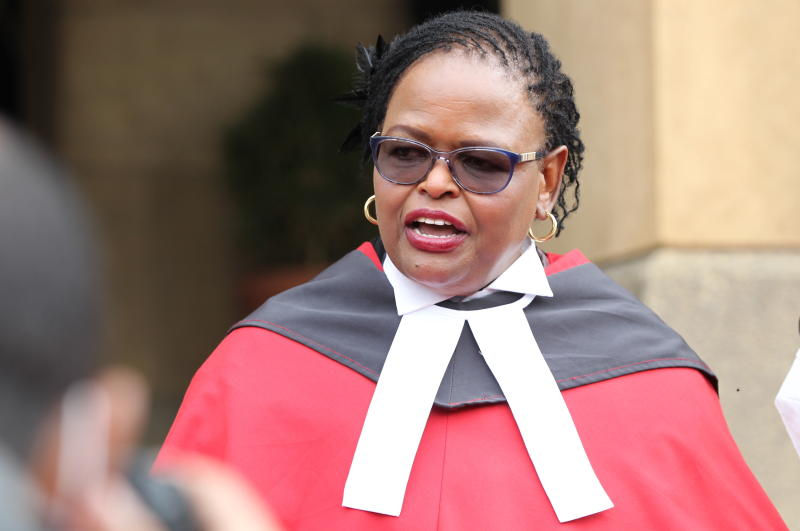Hopes for a better Kenya were dashed from the onset
- Spotlight East Africa
- Aug 28, 2020
- 4 min read

As the 2010 Constitution turns 10, Kenyans should reflect and refocus on four key issues: implementation, reversals, reform and implementation. My argument is three-pronged.
First, the Constitution was promulgated or adopted and implemented under the Grand Coalition (nusu mkate) Government in the context of some challenges. Second, towards the end of the Coalition Government and into the Jubilee administration, constitutional reversals were triggered. Third, that these reversals and inertia necessitate reform and fidelity in implementation. I advance these arguments sequentially.
First, the Constitution was adopted by the people on August 27, 2010, after a long struggle lasting more than 20 years. The struggle was and still is on values, principles, rules and processes that should govern Kenya as an aspiring constitutional democracy. The process was participatory, inclusive and scientific.
The Constitution’s Preamble and operative provisions recognise the independence and post-independence struggles and liberation movements against historical and continuing injustices. These include assassinations, massacres, extrajudicial killings, police brutality, detention without trial, land dispossession, tribal, youth and gender-based economic exclusion, exploitation. And corruption.
The adoption of the Constitution brought hope to most Kenyans who had been oppressed and disappointed by the 40-year Kanu despotism and sabotage of the NARC dream by the Mwai Kibaki presidency.
But even as the Constitution was being promulgated, there were ominous signs regarding challenges to fidelity in implementing its transformative and revolutionary text as well as the people’s legitimate expectations.
Kibaki’s role
Two examples -- President Kibaki made unilateral decisions by inviting to the promulgation ceremony the ICC fugitive, the then Sudanese President Omar al Bashir; and secondly, Kibaki soon nominated four individuals for CJ, AG, Director of Public Prosecutions, and Controller of Budget without consulting Prime Minister Raila Odinga and without due regard to the power and functions of the Judicial Service Commission (JSC) and the one third gender principle, value and rule. Parliament invalidated Kibaki’s nominations.
Second, the Grand Coalition Government made efforts to implement the Constitution largely due to inter-party checks and balances between ODM and PNU. Implementation was also partly due to a balancing mechanism built in the amended 1969 Constitution (2008) and the National Accord and Reconciliation Act (NARA) (2008-13).
The Legislature, the Executive and the Judiciary generally endeavoured to enact or amend laws as well as conduct representation and oversight; execute or administer the laws; and faithfully interpret and enforce the laws. The Constitutional Commissions and Independent Offices (CCIOs) also generally executed their Article 249 functions of protecting the people’s sovereignty, securing observance of all state organs of democratic values and principles, and promoting constitutional democracy. Hence there was praise for the early work of the Constitution Implementation Commission (CIC), the IEBC, the National Law Commission (NLC), the Kenya National Commission on Human Rights, the Public Service Commission (PSC) and the JSC, among others.
But towards the end of the Grand Coalition Government, political power shifted to the PNU wing. And with it, major constitutional reversals were triggered. These included re-establishment of the provincial administration and inertia on the tribal, youth and gender equity questions.
In this context, I was inspired to caution on the challenges of constitutional reversals in a study that has informed debates and that was cited in the media entitled “Constitutional Implementation in Kenya, 2010-2015: Challenges and prospects.”
My caution is even more relevant today and into the future. I argue(d) that;
“Deep-seated interests pose three types of threats or challenges to the implementation of the Constitution. These interests seek to retain the status quo, reverse the gains, or manipulate the content, direction and pace of reform and implementation... The (2013 and 2017) general elections (were) essentially a referendum on fidelity to the Constitution, on the one hand, or the reversal or manipulation of the reform process. Indeed.
Unconstitutional laws
Third, the reversals and inertia intensified under the Jubilee administration from 2013. These include unconstitutional presidential and other elections conducted by IEBC and endorsed by the Willy Mutunga Supreme Court that had turned reactionary and apologetic to the power and money barons. Parliament proposed or enacted and President Kenyatta assented to numerous unconstitutional laws, including security laws (2014), law on the appointment of the Chief Justice, communication laws, laws on NGOs, and electoral laws (2017)... And most remarkably the President, the Executive and the Legislature refused to comply with numerous court orders, including on appointment of judges.
Thus, when the Chief Justice David Maraga Supreme Court implemented the Constitution on presidential elections, intimidation was intensified through “revisiting” while the government and some in the Judiciary also delivered corrupted or contrived decisions or failed to decide or judge. This may be summed up as a mixed but better record on judicial independent accountability than in the preceding judicial dispensation.
This is the context in which many Kenyan(ist)s welcomed the Building Bridges Initiative (BBI) on constitutional, legislative, administrative and policy or political reforms. The understanding is that there are constitutional and structural constraints to further constitutional implementation that can only be addressed through reforms that include self-executing constitutional provisions, enhanced devolution of power and resources (at least 35 per cent as a minimum, not optional ), greater executive accountability to the people and a recognition of the need to enhance productivity and production as a basis of equitable resource sharing, or shared prosperity.
And above all, reform and implementation should ensure that justice under the Constitution shall always be the shield and defender of contemporary and future Kenyans.
This article was published by The Standard.




Comments